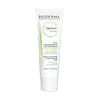What's inside
What's inside
 Key Ingredients
Key Ingredients

 Benefits
Benefits

 Concerns
Concerns

 Ingredients Side-by-side
Ingredients Side-by-side

Water
Skin ConditioningGlycerin
HumectantParaffinum Liquidum
EmollientEthylhexyl Palmitate
EmollientDipropylene Glycol
HumectantXylitol
HumectantBis-PEG/PPG-16/16 PEG/PPG-16/16 Dimethicone
EmollientSodium Acrylate/Sodium Acryloyldimethyl Taurate Copolymer
Emulsion StabilisingIsohexadecane
EmollientCaprylic/Capric Triglyceride
MaskingGlycyrrhetinic Acid
Skin ConditioningTocopheryl Acetate
AntioxidantPolysorbate 80
EmulsifyingDisodium EDTA
Allantoin
Skin ConditioningFructooligosaccharides
HumectantMannitol
HumectantPropylene Glycol
HumectantCetrimonium Bromide
AntimicrobialCeramide NP
Skin ConditioningRhamnose
HumectantGinkgo Biloba Leaf Extract
Skin ConditioningDodecyl Gallate
AntioxidantLaminaria Ochroleuca Extract
Skin ConditioningParfum
MaskingWater, Glycerin, Paraffinum Liquidum, Ethylhexyl Palmitate, Dipropylene Glycol, Xylitol, Bis-PEG/PPG-16/16 PEG/PPG-16/16 Dimethicone, Sodium Acrylate/Sodium Acryloyldimethyl Taurate Copolymer, Isohexadecane, Caprylic/Capric Triglyceride, Glycyrrhetinic Acid, Tocopheryl Acetate, Polysorbate 80, Disodium EDTA, Allantoin, Fructooligosaccharides, Mannitol, Propylene Glycol, Cetrimonium Bromide, Ceramide NP, Rhamnose, Ginkgo Biloba Leaf Extract, Dodecyl Gallate, Laminaria Ochroleuca Extract, Parfum
Water
Skin ConditioningGlycolic Acid
BufferingGluconolactone
Skin ConditioningAlcohol Denat.
AntimicrobialHydroxyethyl Acrylate/Sodium Acryloyldimethyl Taurate Copolymer
Emulsion StabilisingSodium Hydroxide
BufferingButyl Avocadate
Skin ConditioningDipropylene Glycol
HumectantPEG-7 Glyceryl Cocoate
EmulsifyingPentylene Glycol
Skin ConditioningXylitylglucoside
HumectantZinc PCA
HumectantPolyacrylate-13
Anhydroxylitol
HumectantDisodium EDTA
Hydroxyethylcellulose
Emulsion StabilisingSalicylic Acid
MaskingSodium Benzoate
MaskingPolyisobutene
Xylitol
HumectantButylene Glycol
HumectantPPG-26-Buteth-26
Skin ConditioningChlorphenesin
AntimicrobialBoswellia Serrata Resin Extract
SmoothingSorbitan Isostearate
EmulsifyingPEG-40 Hydrogenated Castor Oil
EmulsifyingPolysorbate 60
EmulsifyingParfum
MaskingO-Cymen-5-Ol
AntimicrobialPolysorbate 20
EmulsifyingPolyquaternium-51
Skin ConditioningLinalool
PerfumingLimonene
PerfumingCitronellol
PerfumingHexyl Cinnamal
PerfumingPropyl Gallate
AntioxidantWater, Glycolic Acid, Gluconolactone, Alcohol Denat., Hydroxyethyl Acrylate/Sodium Acryloyldimethyl Taurate Copolymer, Sodium Hydroxide, Butyl Avocadate, Dipropylene Glycol, PEG-7 Glyceryl Cocoate, Pentylene Glycol, Xylitylglucoside, Zinc PCA, Polyacrylate-13, Anhydroxylitol, Disodium EDTA, Hydroxyethylcellulose, Salicylic Acid, Sodium Benzoate, Polyisobutene, Xylitol, Butylene Glycol, PPG-26-Buteth-26, Chlorphenesin, Boswellia Serrata Resin Extract, Sorbitan Isostearate, PEG-40 Hydrogenated Castor Oil, Polysorbate 60, Parfum, O-Cymen-5-Ol, Polysorbate 20, Polyquaternium-51, Linalool, Limonene, Citronellol, Hexyl Cinnamal, Propyl Gallate
 Reviews
Reviews

Ingredients Explained
These ingredients are found in both products.
Ingredients higher up in an ingredient list are typically present in a larger amount.
Dipropylene Glycol is a synthetically created humectant, stabilizer, and solvent.
This ingredient helps:
Dipropylene glycol is technically an alcohol, but it belongs to the glycol family (often considered part of the ‘good’ alcohols). This means it is hydrating and gentle on skin unlike drying solvent alcohols like denatured alcohol.
As a masking agent, Dipropylene Glycol can be used to cover the smell of other ingredients. However, it does not have a scent.
Studies show Dipropylene Glycol is considered safe to use in skincare.
Learn more about Dipropylene GlycolDisodium EDTA plays a role in making products more stable by aiding other preservatives.
It is a chelating agent, meaning it neutralizes metal ions that may be found in a product.
Disodium EDTA is a salt of edetic acid and is found to be safe in cosmetic ingredients.
Learn more about Disodium EDTAParfum is a catch-all term for an ingredient or more that is used to give a scent to products.
Also called "fragrance", this ingredient can be a blend of hundreds of chemicals or plant oils. This means every product with "fragrance" or "parfum" in the ingredients list is a different mixture.
For instance, Habanolide is a proprietary trade name for a specific aroma chemical. When used as a fragrance ingredient in cosmetics, most aroma chemicals fall under the broad labeling category of “FRAGRANCE” or “PARFUM” according to EU and US regulations.
The term 'parfum' or 'fragrance' is not regulated in many countries. In many cases, it is up to the brand to define this term.
For instance, many brands choose to label themselves as "fragrance-free" because they are not using synthetic fragrances. However, their products may still contain ingredients such as essential oils that are considered a fragrance by INCI standards.
One example is Calendula flower extract. Calendula is an essential oil that still imparts a scent or 'fragrance'.
Depending on the blend, the ingredients in the mixture can cause allergies and sensitivities on the skin. Some ingredients that are known EU allergens include linalool and citronellol.
Parfum can also be used to mask or cover an unpleasant scent.
The bottom line is: not all fragrances/parfum/ingredients are created equally. If you are worried about fragrances, we recommend taking a closer look at an ingredient. And of course, we always recommend speaking with a professional.
Learn more about ParfumWater. It's the most common cosmetic ingredient of all. You'll usually see it at the top of ingredient lists, meaning that it makes up the largest part of the product.
So why is it so popular? Water most often acts as a solvent - this means that it helps dissolve other ingredients into the formulation.
You'll also recognize water as that liquid we all need to stay alive. If you see this, drink a glass of water. Stay hydrated!
Learn more about WaterXylitol is a humectant and prebiotic. It can help with dry skin.
In studies, xylitol has been shown to improve dry skin. It decreased transepidermal water loss, or when water passes through the skin and evaporates. Xylitol also showed to help improve the biomechanical properties of the skin barrier.
The prebiotic property of xylitol may also help reinforce our skin's natural microbiome. Having a healthy microbiome prevents infection by bad bacteria and helps with hydration.
As a humectant, Xylitol helps draw moisture from both the air and from deeper skin layers. This helps keep skin hydrated.
Xylitol is a sugar alcohol and commonly used as a sugar substitute. It is naturally occurring in plants such as strawberries and pumpkin.
Learn more about Xylitol